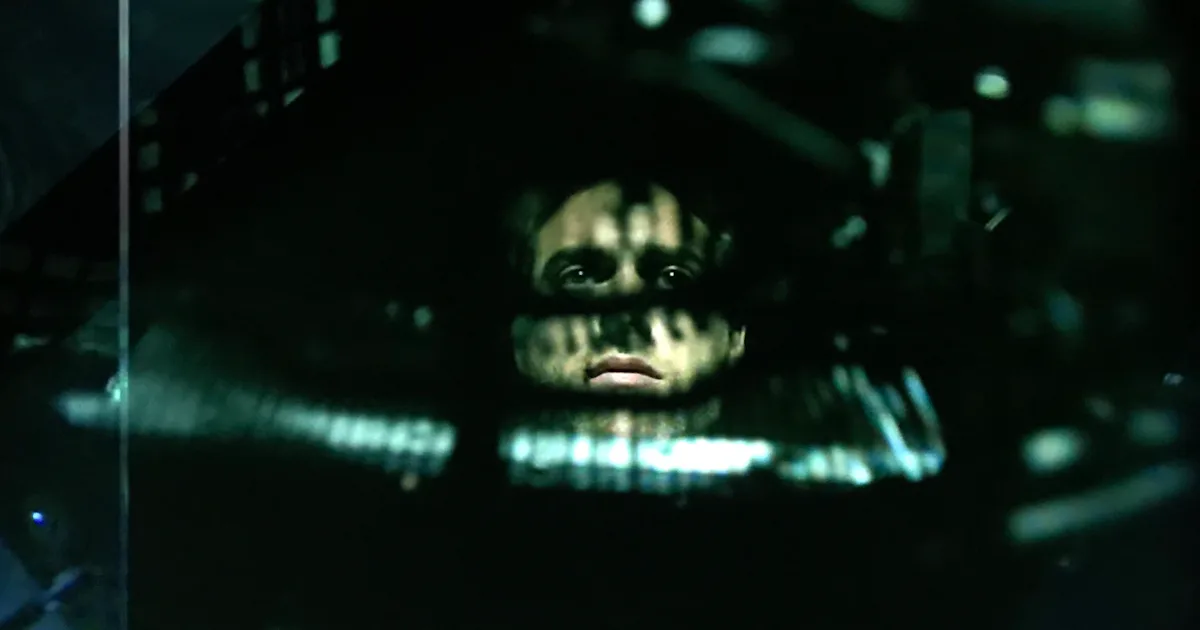
Based on a reporter who digs into crimes that don’t quite make real-world sense, mid-’70s favoriteKolchak: The Night Stalker spawned numerous comic books and novels, was cited by Chris Carter as a pivotal influence onThe X-Files, and practically reinvented the detective procedural. But ABC’s 2005 reboot, canceled just over halfway through its 10-episode run (in the middle of a two-parter, no less), wasn’t afforded the same opportunity to make such an impact.
Indeed, Night Stalker was essentially thrown to the wolves from the outset, premiering in the same time slot as NBC’s The Apprentice, Fox’s MLB playoffs, and CBS’s CSI: Crime Scene Investigation. But armchair sleuths who switched over from the latter 20 years ago today were treated to an intriguing and decidedly murkier subversion of the prime-time whodunit.
The opener wastes little time differentiating itself from the pack. Within the first few minutes, a housewife is disturbed by a mysterious entity who chases her through the house before dragging her kicking and screaming into the night. Filmed in high-end digital video (a creative choice inspired by Heat director Michael Mann) and often shot from the POV of the unknown attacker, it’s a pulse-racing statement of intent that feels more akin to a found-footage horror than a network TV crime drama.
It’s a similar story with the following set-piece, in which a young girl watching a televised Three Little Pigs (an on-the-nose metaphor for what happens next) practically has her house blown down by the same feral force, forcing her to hide while her mum is violently attacked in the shower. The screams emitted as she, too, is abducted are truly the stuff of nightmares.
Investigating the disappearances is Stuart Townsend’s Carl Kolchak, a self-assured cub reporter for the L.A. Beacon we meet scouring the streets accompanied by a pulpy voiceover. “I drive at night, a police radio as my compass, looking for answers to questions I’m only learning how to ask. About things adults dismiss… but children are right to fear.” The newsman has an ulterior motive, too, having lost his own wife in a similarly unexplained incident that a Vegas cop – a man in black who frequently pops up unannounced – seems determined to pin on him.
Kolchak isn’t the only reporter on the case, though. Unlike her Beacon colleague, Gabrielle Union’s Perri Reed believes there’s a perfectly rational explanation for all the strange occurrences. The Scully to his Mulder, you could say, especially since creator Frank Spotnitz penned no fewer than 68 X-Files episodes. Often joined by Jain McManus (Eric Jungmann), a Jimmy Olsen-esque photographer who provides some much-needed comic relief, the pair continually butt heads before gaining a mutual respect for each other’s methods.
In fact, Perri is soon left with no option but to at least acknowledge the otherworldly after being pulled into the depths of a bat-filled cave by an unseen creature. And their yin-yang dynamic (which, refreshingly, doesn’t try to harness any clichéd sexual tension) continues to power the show as it takes on everything from a Charles Manson-esque cult leader who brainwashes people into committing murder to a university initiation ritual that literally scares students dead.
By basing its drama within the machinations of the cutthroat media landscape, rather than the tried and tested police headquarters or forensics unit, the show also occasionally gets to double up as a newsroom satire. “How long would I last if I wrote what I believe?” a cynical Kolchak admits about a story that contradicts his own version of events. And the pair are forced to operate in an environment where the dominant mantra is undoubtedly “if it bleeds, it leads.”
Night Stalker’s first episode also establishes a distinctive aesthetic, not only with its immersive camerawork but its nocturnal color palette. Indeed, much of the action takes place at night, within skyscraper offices illuminated by the cityscape and traffic lights below. Admittedly, not all of its visuals work, with the flashing of keywords onto the screen during Kolchak’s narrations, as if audiences need a little help grasping the importance of “suffering,” soon wearing thin.
Annoying gimmicks aside, though, Night Stalker’s pilot serves as both a respectful update of the source material – it also throws a nod to the original Kolchak by digitally inserting Darren McGavin into the newsroom for a cameo – and a new cult classic in its own right. Luckily, its admirers got to watch the remaining four episodes during a 2006 airing on the Sci-Fi Channel. It’s just a shame ABC’s scheduling left its original run dead on arrival.



